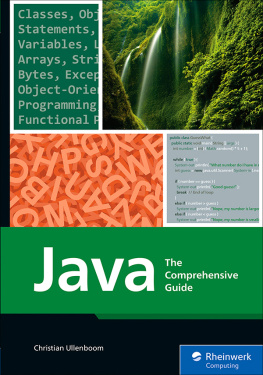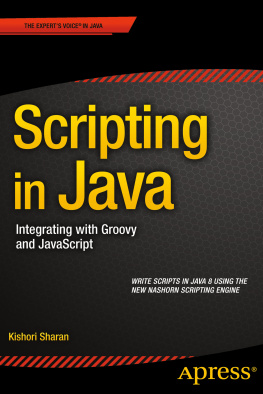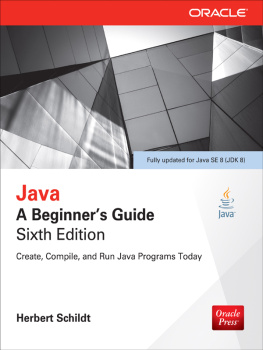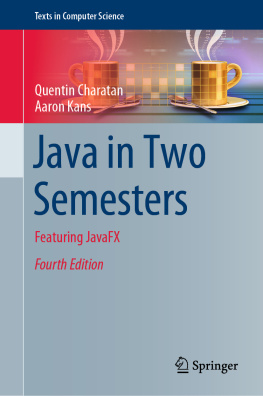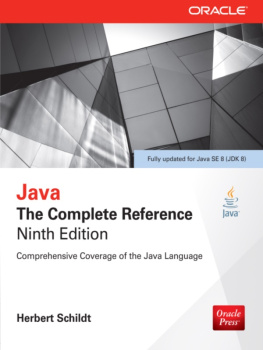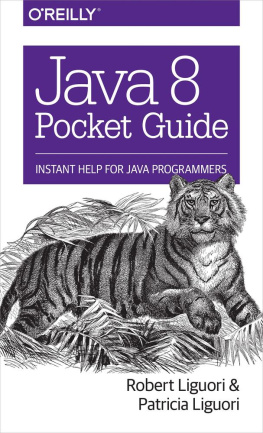Kishori Sharan [Kishori Sharan] - Java Language Features: With Modules, Streams, Threads, I/O, and Lambda Expressions
Here you can read online Kishori Sharan [Kishori Sharan] - Java Language Features: With Modules, Streams, Threads, I/O, and Lambda Expressions full text of the book (entire story) in english for free. Download pdf and epub, get meaning, cover and reviews about this ebook. year: 2018, publisher: Apress, genre: Computer. Description of the work, (preface) as well as reviews are available. Best literature library LitArk.com created for fans of good reading and offers a wide selection of genres:
Romance novel
Science fiction
Adventure
Detective
Science
History
Home and family
Prose
Art
Politics
Computer
Non-fiction
Religion
Business
Children
Humor
Choose a favorite category and find really read worthwhile books. Enjoy immersion in the world of imagination, feel the emotions of the characters or learn something new for yourself, make an fascinating discovery.
- Book:Java Language Features: With Modules, Streams, Threads, I/O, and Lambda Expressions
- Author:
- Publisher:Apress
- Genre:
- Year:2018
- Rating:3 / 5
- Favourites:Add to favourites
- Your mark:
Java Language Features: With Modules, Streams, Threads, I/O, and Lambda Expressions: summary, description and annotation
We offer to read an annotation, description, summary or preface (depends on what the author of the book "Java Language Features: With Modules, Streams, Threads, I/O, and Lambda Expressions" wrote himself). If you haven't found the necessary information about the book — write in the comments, we will try to find it.
Java Language Features, Second Edition starts with a series of chapters on the essential language features provided by Java, including annotations, reflection, and generics. These topics are then complemented by details of how to use lambda expressions, allowing you to build powerful and efficient Java programs. The chapter on threads follows this up and discusses everything from the very basic concepts of a thread to the most advanced topics such as synchronizers, the fork/join framework, and atomic variables.
This book contains unmatched coverage of Java NIO, the Stream API, the Path API, the FileVisitor API, the watch service, and asynchronous file I/O. With this in-depth knowledge, your data- and file-management programs will be able to take advantage of every feature of Javas powerful I/O framework and much more.
Additionally, three appendices are available for free via the Download Source Code on apress.com. These appendices will give you a head start on the most important features of Java 10 and the new Java versioning scheme.
What Youll Learn
- Use essential and advanced features of the Java language
- Code Java annotations and inner classes
- Work with reflection, generics, and threads
- Take advantage of the garbage collector
- Manage streams with the Stream API
Who This Book Is For
Those new to Java programming and continues the learning Java journey; it is recommended that you read an introductory Java programming book first, such as Beginning Java Fundamentals, from Apress.
Kishori Sharan [Kishori Sharan]: author's other books
Who wrote Java Language Features: With Modules, Streams, Threads, I/O, and Lambda Expressions? Find out the surname, the name of the author of the book and a list of all author's works by series.

![Kishori Sharan [Kishori Sharan] Java Language Features: With Modules, Streams, Threads, I/O, and Lambda Expressions](/uploads/posts/book/119352/thumbs/kishori-sharan-kishori-sharan-java-language.jpg)
